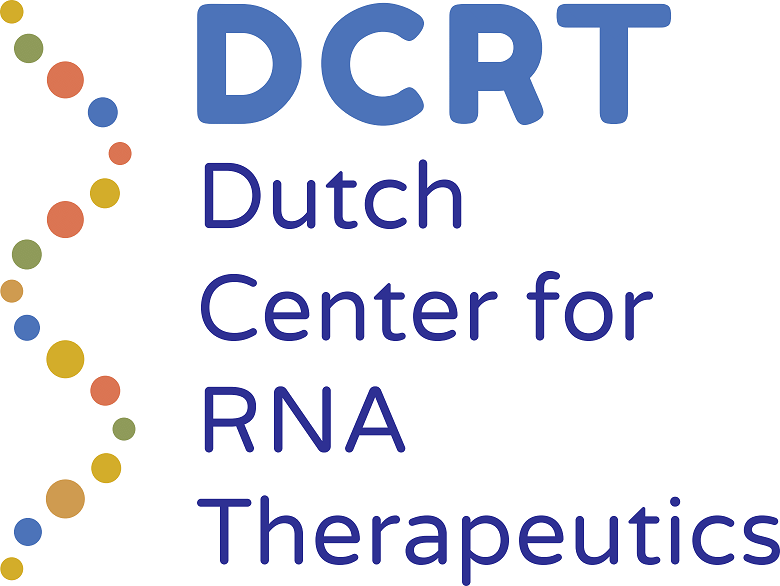Contact Form
If your enquiry is patient-related, please address the following questions (see also item 2 in the Q&A section below) on the contact form or by email to DCRT@LUMC.nl.
- Who is the patient and what is their age?
- What is the name of the disease and the gene that is involved?
- Which tissues are affected by the disease? (we can currently only treat brain, spinal cord or eye)
- What is the exact genetic mutation? (ask your clinician if you don’t know)
- In which country are you based and where are you currently being treated?
- Has the diagnosis been confirmed by a clinician?
- May we contact the clinician for more information about your diagnosis?
- Have you already discussed the possibility of a genetic treatment with someone? If so, with whom?
- What would you like to gain from treatment?
If your enquiry is not patient-related, you may type in your question directly on the contact form below.
FAQ
1. Which disorders are eligible for RNA therapy at DCRT?
We focus on severely debilitating genetic disorders that affect tissues of the brain, the spinal cord or the eye.
In
this list, you will find the genes of interest that we have identified so far. The list is non-exhaustive, so please contact us if there are other mutations that we are not aware of or if you want to know more about RNA therapy. Feel free to send your questions to DCRT@LUMC.nl.
2. Which disorders are NOT eligible for DCRT's RNA therapy?
Unfortunately, our ASO therapy can only treat severe, progressive neurological diseases. We cannot for example treat muscle diseases because delivery of an ASO drug to the affected muscles is simply not possible.
Moreover, we can only develop individualized therapy for single patients (N=1), not for whole disease groups, larger groups of patients or for more common variants.
We assess cases following standard guidelines established by N=1 Collaborative and DCRT.
If you want us to look into a specific case, you may send us the details, but please keep expectations low.
3. Can RNA treatment help for my genetic disorder or that of my child or relative?
To determine whether a patient is eligible for the type of RNA treatment that DCRT develops, we require additional information about the patient and the disorder:
- Who is the patient and what is their age?
- What is the name of the disease and the gene that is involved?
- Which tissues are affected by the disorder? (we can currently only treat brain, spinal cord or eye)
- What is the exact genetic mutation? (ask your clinician if you don’t know)
- In which country are you based and where are you currently being treated?
- Has the diagnosis been confirmed by a clinician?
- May we contact the clinician for more information about your diagnosis?
- Have you already discussed the possibility of a genetic treatment with someone? If so, with whom?
- What would you like to gain from treatment?
You may send this information via e-mail to DCRT@LUMC.nl or via the contact form on top of this page.
4. Who should I contact when I live outside The Netherlands?
For questions about RNA treatment options in other European countries, you may contact the 1Mutation1Medicine network directly.
Patients, their relatives or clinicians outside Europe are advised to reach out to N=1 Collaborative: info@n1collaborative.org.
5. Where can I find more information about the RNA treatment that DCRT is working on?
There are two interesting DCRT webinars on the development of n1 RNA therapies and ASO-based therapies for retinal diseases that are published on the website of the Oligonucleotide Therapeutics Society.
Furthermore, with the N=1 Collaborative, a global initiative to develop best practices for ultra-rare therapy development, DCRT has published a set of guidelines for variant selection. Moreover, DCRT researchers feature in an online N1C variant workshop, a patient selection workshop and in seminars and fireside chats (podcasts) on individualized medicine, all of which are available on the N1C website.
A list of our talks, publications and posters can be found on the DCRT website under the button with the same name.
6. How can I stay up to date with the work of DCRT?
You can follow us on LinkedIn to stay informed about the activities of the DCRT. Also, there is a news blog on our website where you can find the latest news and talks at upcoming conferences. Or come and talk with us at one of the events where we will be!
Projects that we are currently working on are available in the
N1C gene registry.
7. I am a clinician in The Netherlands. Can I contact you about my patient?
If you have a patient who you think may be eligible for our RNA therapy, please send an email with information about the patient, the disease and the genetic mutation to dcrt@lumc.nl.
Also, if you would like to collaborate with us on a project, we will be happy to hear from you!
8. I am a representative of a patient organization in The Netherlands. How can I contact you to know more about DCRT's therapy?
The work we do is to potentially help patients with an ultra-rare brain or eye disease. So we would be very interested to get in touch with patient organizations in The Netherlands. Just send an email introducing yourself to dcrt@lumc.nl and we will contact you.
9. I want to make a donation. How can I do this?
Very nice that you want to support our work. Please e-mail us at DCRT@LUMC.nl so we can explore together if your donation should go to the DCRT in general or to projects or diseases we work on specifically.
